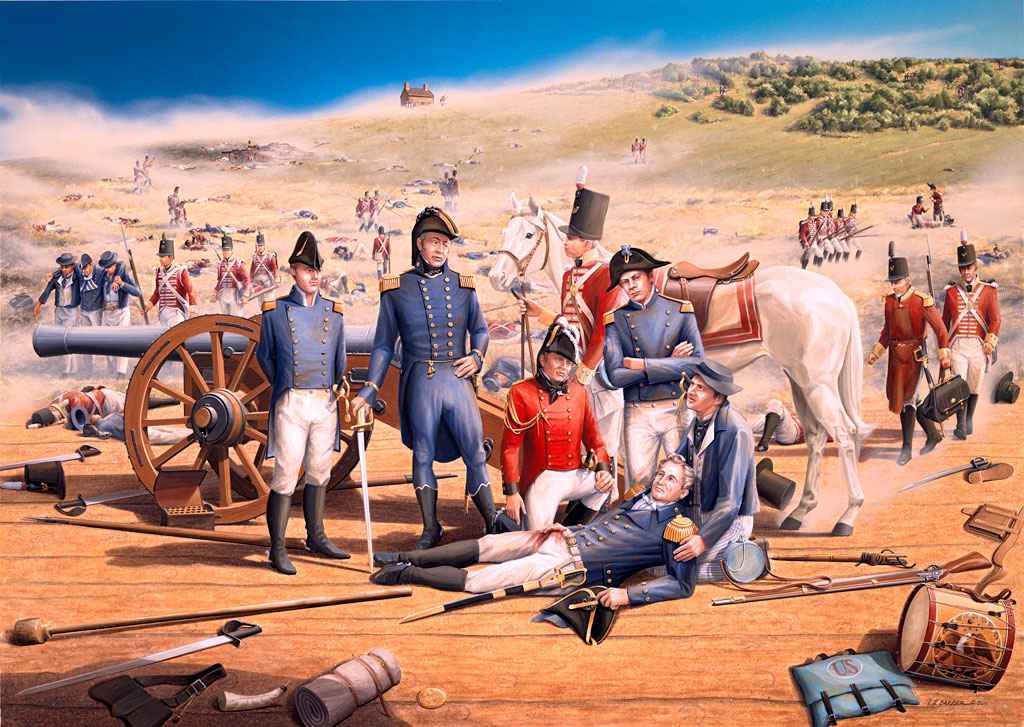By the summer of 1814, the War of 1812 had been raging for two years. Up until that point, the United States had been on the offensive, and the British had been largely defensive. But there was a reason for this restraint—Britain was preoccupied with the Napoleonic Wars. With Napoleon finally defeated and exiled to Elba in April 1814, Britain could now shift its attention to North America. And America was in trouble.

With fresh troops from Europe, Britain decided it was time to go on the offensive. And what better target than Washington, D.C.? Although it had been the U.S. capital for 14 years, Washington was still little more than a glorified village, complete with muddy roads, scattered buildings, and half-finished government offices. But symbolic targets make the best statements. By burning Washington, the British could send a powerful message: We own you now.
The Path to Washington
Leading the charge were Major General Robert Ross and Rear Admiral George Cockburn, seasoned commanders who had seen action in the Napoleonic Wars. With around 4,000 men, they landed in Maryland and began marching northward. Their goal was clear: burn Washington, humiliate the U.S. government, and avenge the American destruction of York (modern-day Toronto) in 1813.
Despite warnings from multiple sources, U.S. Secretary of War John Armstrong refused to believe Washington was the target. He was convinced the British would go after Baltimore, a more significant port city. Even President James Madison was unsure. The U.S. response? Almost nothing.
When British forces reached Bladensburg, just outside Washington, they met a hastily assembled American militia of 6,000 men. What followed was a disaster for the U.S.—what some humorously call the “Bladensburg Races.” As soon as the British advanced, most of the American militia turned and fled, outpacing even the fastest British troops. The only ones who stood their ground were 500 U.S. Navy sailors and a handful of artillerymen, but they were quickly overwhelmed. Madison himself was on the battlefield, making him the first (and only) sitting U.S. president to flee from an enemy attack.
The Burning Begins
On August 24, 1814, British troops entered Washington unopposed. Their first stop? The U.S. Capitol. Unlike York, where Americans had burned down a provincial parliament building, the Capitol was a grand stone structure—hard to set ablaze. So, the British stacked furniture and documents inside, lit the flames from within, and watched as Congress’s home burned to the ground. The Library of Congress, housed in the same building, was reduced to ashes.
Next came the President’s Mansion, later known as the White House. First Lady Dolley Madison had already fled, but not before ensuring that Gilbert Stuart’s famous portrait of George Washington was saved. She was likely one of the only Americans in Washington that night who truly understood the gravity of the situation.
When the British arrived, they found a fully prepared dinner table—Dolley had planned a feast, possibly expecting victorious American officers to dine there. Instead, British troops enjoyed the abandoned meal before setting the mansion ablaze. The flames consumed everything, leaving only a scorched shell that would later be painted white to hide the damage—giving birth to the name “White House.”
Why It Mattered
The attack on Washington was short-lived. A massive storm, possibly a hurricane, swept through the city the next day, dousing the flames and driving the British out. But the psychological impact was lasting. Americans had to face an uncomfortable truth: their capital had been humiliatingly burned, and their militia had proven useless in defending it. This led to calls for a stronger, professional standing army.
In the bigger picture, the burning of Washington was part of a series of escalating attacks between the U.S. and Britain, a tit-for-tat cycle of destruction that had started with the burning of York. But while the British burned Washington for symbolic revenge, Americans later rallied at Baltimore, where the defense of Fort McHenry inspired Francis Scott Key to write “The Star-Spangled Banner.”
Ultimately, the War of 1812 ended in a stalemate with the Treaty of Ghent in December 1814. But the burning of Washington remained a stark reminder that, in war, even capitals can burn.

No comments yet.